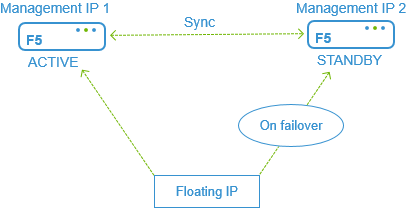High availability on F5 BIG-IP load balancers
What is high availability or HA load balancer?
For any application or website that has been deployed, it is important to have load balancing and high availability implemented to sustain high traffic and failover in case your primary infrastructure goes down.
The load balancer is the key component that ensures high availability and intelligently routes client requests to the right server. This maximizes performance and capacity utilization while sending requests only to servers that are online.
High availability (HA) makes sure that the server pool is ready for user requests in situations when your primary load balancer is down. You can redirect that traffic to your backup/secondary load balancer with minimal downtime, which is unnoticeable to users.
High availability on F5 BIG-IP
F5 load balancer ensures seamless failover in cases where a server is down or overloaded. It redirects the traffic to other servers that could handle the load.
HA deployment consists of two BIG-IP (like other load balancers) systems, synchronized with the same configuration:
An active system that processes traffic.
A standby system that remains in dormant mode until required.
This pairing's goal is to provide users with seamless, uninterrupted service, in case one device fails.
If the active system is taken offline or fails to connect, the standby system immediately takes over, to avoid processing traffic. Typically, the newly active system remains active until an event requires the first BIG-IP system to become active again or until you manually force that system into standby.
Sensor automation on F5 load balancer in Active/Standby mode
The sensor automatically detects the HA Peer configuration when one of these devices is added to the sensor as part of addagentless. Also, during automation, the certificate is synced to both HA devices based on the F5 configuration. Hence, you are not required to add both the IPs as separate agentless.
The sensor supports the following configurations when adding an F5 for automation:
Floating IP: This IP address is shared between 2 BIG-IP systems. When you assign any self IP address to the default traffic group
traffic-group-1, it is a floating self IP address.Management IP: The IP of the device is used to connect to a specific device among the HA peer. Both ACTIVE & STANDBY devices have separate management IPs.
